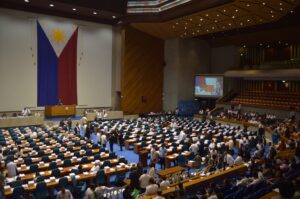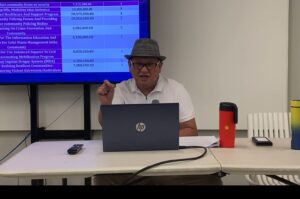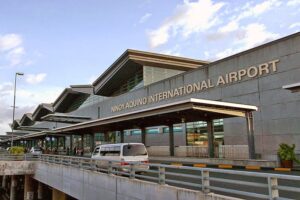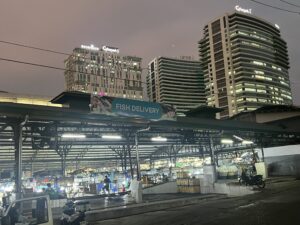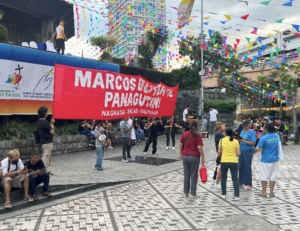How important is it for an Ilonggo writer’s book to be featured at the prestigious Frankfurter Buchmesse? This article explores the significance of this achievement and what it means for regional literature. The Frankfurter Buchmesse, or Frankfurt Book Fair, is the world’s largest book trade fair, attracting publishers, literary figures, and industry leaders. Held annually in October in Germany, it’s more than just a showcase for bestsellers—it’s a key event where trends and the future of literature are shaped. For an Ilonggo author, being part of this global stage is a major milestone for local literature to reach a wider audience.

This year marks the 75th anniversary of the Frankfurt Book Fair, and the Philippines will be the Guest of Honor (GoH) for 2025. This offers a unique opportunity to spotlight Filipino authors and their works on the world stage. It also gives Filipino literature the chance to be more visible in the global market, opening doors for wider distribution and possible translations into other languages.
In a rare opportunity this year, books by authors from Western Visayas will be featured at the Fair. This is a significant moment, as books from this region don’t often get the attention they deserve. Motivated by this, I’ve put together a list of books that deserve recognition—not only for their literary quality but also for the respect I have for their authors as cultural contributors. My review is based on seven catalogs, spanning genres like Fiction, New Adult, Graphic Novels, Children’s and Young Adult Literature, Social Science, Creative Non-Fiction, and Poetry. These catalogs are available for free on the National Book Development Board’s website.
First on the list is Lumbay ng Dila (Tongue’s Melancholy) by Genevieve L. Asenjo. Lumbay ng Dila tells the trauma and wisdom of Sadyah Zapanta Lopez, the abandoned daughter of revolutionary leaders on the island of Panay in the Western Visayas region of the Philippines. It focuses on her search for truth in the murder case against her politician grandfather during the Marcos period. Throughout the story, she navigates a series of romantic relationships with a Chinese-Filipino law student, a Muslim-Filipino skilled worker, and a Manila-based Indian businessman.

Second on the list is Benjamin by Angel Magahum, translated by John E. Barrios and Fennie Mae T. Tanangonan. Benjamin is the first novel written in the Hiligaynon language, making Angel Magahum the “Father of the Ilonggo Novel.” National Artist and literary critic Resil Mojares even expanded this and considers it the first Visayan novel.
Third on the list is In the Womb of The Earth and Other Stories: Self-Translation from Hiligaynon To English by Alice Tan Gonzales. Alice Tan Gonzales’s stories come straight from the womb of West Visayas, her home. They embody the regional culture—its folklore and history—and are peopled by farmers and fisherfolk of Panay and Negros. Originally written in Hiligaynon, her stories reflect the traditional Hiligaynon style of writing—a slow unfolding of narrative in the classic realist mode with a tendency toward the romantic, yet with elements of postcolonial protest and gender-related themes.
Fourth on the list is Lucia Dreaming by Lucia Asul. Based on nightmares and supernatural visions, this dream journal takes you to dark alleys, to a world illuminated by the eerie glow of two moons, and to long-forgotten childhood fears, where past traumas are hidden and then rediscovered. And though the mind can weave terrors when we sleep, it’s the horrors happening while our eyes are wide open that we should be afraid of.
Fifth on the list is The Perfect Tree by Glory Moralidad, illustrated by Danielle V. Florendo. The people of Anyag are panicking as their beloved Narra tree is dying. They don’t know what to do. The tree brings fame to their village, and they don’t want to lose it! So, they plan to create the perfect tree. But they soon realize what perfection means and how it affects their land.

Sixth on the list is Tikim: Essays on Philippine Food and Culture by Doreen G. Fernandez. First published in 1994, Tikim gathers essays by Doreen G. Fernandez that provide the merest tasting—“tikim lamang”—of Philippine food—its dishes, flavors, books, feasts, people, places, and history. In prose that is incisive and evocative, Fernandez’s exploration of food in their cultural, historical, social, and even political contexts leads us “towards a wider understanding of what is Filipino.” This book has been called groundbreaking, seminal, and revelatory. In the thirty years since Tikim first saw print, Fernandez’s work is finding new audiences. Six essays have been added to this expanded and updated edition; as the author says, there is much more to explore.
Seventh on the list is the SINE TALA SERIES: Philippine Cinema and History, Philippine Cinema and Culture, and Philippine Cinema and Literacy by Nick Deocampo. The three-volume Sine Tala series builds a holistic knowledge of Philippine cinema and addresses the historical, cultural, and pedagogical aspects of the country’s popular culture form. The essays in each volume explore subjects that have preoccupied Nick Deocampo in his intellectual and academic life.
Eighth on the list is ALTERNATIVE CINEMA: The Unchronicled History of Alternative Cinema in The Philippines by Nick Deocampo. This book is the first comprehensive account of the network of film forms—from documentaries to experimental, animation to short features, student films to home videos—that constitutes an alternate cinematic reality to conventional Filipino movies. The “invisibility” of these alternative film forms belies the sheer volume of films produced, outnumbering the entire total production by the mainstream movie industry. Yet, despite their prodigious number and ubiquitous presence, their history is forgotten, and they live in a subterranean world.

Ninth on the list is Everything Is Fiction by Vicente Garcia Groyon. In this selection of essays written over twenty-five years, the award-winning author Vicente Garcia Groyon reflects on his identity as a writer and his relationship to his own writing, to the works of other writers, and to the world at large. Part memoir, part writer’s journal, this collection of introspective, personal, and candid “proto-fictions” is animated by Groyon’s eye for detail, love for storytelling, and commitment to truthfulness.
Tenth on the list is Golden Kumquats in Trieste And Other Travel Tales by Alice M. Sun-Cua. Written by a medical doctor, these travel essays present a new perspective on the foreign places we visit and inhabit and how, through many meanderings and detours, all these travels lead to self-discovery and personal illumination. Sun-Cua draws attention to the characteristics of each place, sharing her perspective with her readers, invoking irony, wit, and affinities.
Eleventh on the list is Everything Is Realism: Essays on Narrative Craft by Vicente Garcia Groyon. This collection tackles issues in poetics such as the reasons for novel-writing and why the genre will always be essentially in the realist mode, contrasting it with the practice of writing fiction, the morals of the fictionist, and the capacity of stories to be portents for things to come. Vicente Garcia Groyon reflects on his assumptions and beliefs about Philippine fiction and extends his gaze to narratives from other countries and in other forms, including cinema, drama, poetry, and architecture. Everything Is Realism is forthright, opinionated, deeply personal, and a must-read for students of literature and creative writing.

Twelfth on the list is Tigom: Collected Poems by Merlie M. Alunan. Tigom is a Visayan word that means “to gather, to collect, to save.” Collected here are the five books of poetry published over the last thirty years by remarkable poet Merlie M. Alunan. Some poems are deeply personal, while a good number respond to the politics of the last fifty years or so. Tigom tells not just of the author’s life, but also of our nation’s life filled with disasters and political upheavals.
The inclusion of these books in this year’s Frankfurt Book Fair can be regarded as a remarkable achievement. This accomplishment not only affirms the talent of writers from Western Visayas but also acknowledges the truly international caliber of Ilonggo literature. This is a time of great celebration for writers, and it sends a powerful message to all of us: the success of Filipino writers is not only a local triumph but a proof to the global recognition they deserve. Let this victory inspire all aspiring writers, for it proves that with passion, dedication, and the courage to share our stories, the world is ready to listen.
***
(Noel Galon de Leon is a writer and educator at University of the Philippines Visayas, where he teaches in both the Division of Professional Education and U.P. High School in Iloilo. He serves as an Executive Council Member of the National Commission for Culture and the Arts-National Committee on Literary Arts.)



